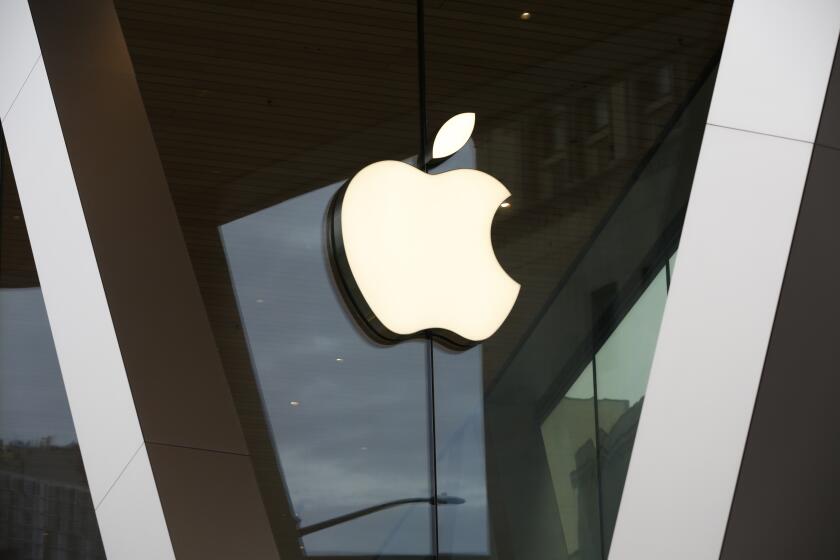Thousands of UC healthcare and research employees go on strike

- Share via
Thousands of University of California healthcare, research and technical employees walked off the job Wednesday, urging the university to address staffing shortages and end what they describe as restrictions on employees’ ability to raise concerns about workplace conditions.
The planned three-day strike comes amid strained negotiations between the 10-campus UC system and University Professional and Technical Employees-CWA Local 9119, the union representing nearly 20,000 employees.
Another union, the American Federation of State, County and Municipal Employees Local 3299, which represents more than 37,000 patient care and service workers, launched a two-day strike the same day.
The overlapping strikes could affect operations at hospitals and clinics as well as research on a wide array of medical, climate and other issues.
UC spokesperson Heather Hansen has said that during a strike the university system “is prepared to make every effort to ensure the critical operations of the University system, which includes patient care, continue at a level of excellence that UC patients, students, faculty, and staff expect.”
- Share via
Workers represented by the UPTE union include nurse case managers, mental health counselors, optometrists, pharmacists, physical therapists, clinical researchers, IT analysts and animal health technicians.
Striking workers gathered Wednesday morning outside Ronald Reagan UCLA Medical Center. Around 10 a.m. several hundred of them, wearing blue and green union shirts and wielding “on strike” signs, marched down Westwood Boulevard, blocking traffic for several blocks. The demonstrators looped back around toward campus, beating drums, ringing bells and chanting, “Whose university? Our university!”
Several UCLA security officers lined up with their bikes in front of the entrance to Murphy Hall, where the school’s chancellor and other senior officials have their offices, as protesters passed by.
AFSCME Local 3299 voted to authorize leadership to call unfair labor practice strikes in the fall, after beginning negotiations in January 2024, said Todd Stenhouse, a spokesperson for the union. Labor contracts for service workers and patient care technical workers expired last year, and the university’s wage proposal does not fix an “affordability crisis” workers are facing, Stenhouse said.
Jacob Niles Creer, 30, a clinical equipment specialist in the main operating room at Ronald Reagan UCLA Medical Center, said support staff in the hospital — for example, assistants who bring nurses pharmaceutical drugs and workers such as himself who help troubleshoot robotic surgery equipment — are stretched thin.
“We are not seeing any movement in bargaining,” Creer said. “We aren’t getting paid enough and we aren’t staffed enough.”
Among striking UPTE members are lab technicians at the California Animal Health and Food Safety Laboratory at UC Davis, a lab crucial to California’s efforts to track and prevent bird flu as it spreads through cattle herds.
Striking workers also include operators of particle accelerators, mechanical technicians, radiation control technicians and other workers at Lawrence Berkeley National Laboratory, an energy research center that the university system manages on behalf of the federal government.
UPTE said it called for the strike because the university has failed to bargain in good faith in negotiations that began in June, with contracts expiring in October. The union accuses the university system of unlawfully imposing “draconian” restrictions on where workers can picket and their ability to speak freely about staffing shortages and other workplace issues.
In January, UPTE filed a 490-page unfair labor practice charge with California’s Public Employment Relations Board, challenging rules that vary from campus to campus. For example, the rules ban people from passing out fliers closer than 50 feet from any door at UC San Francisco and UC Davis, while requiring any picketer at UC Merced to remain 30 feet from walkways, roadways or doors.
The university denies that it faces a staffing crisis and said it has offered robust wages and benefits. Hansen, the UC spokesperson, accused UPTE of walking away from negotiations prematurely last month.
“We have continuously reached out,” Hansen said in an email. The union needs to “walk the walk and actually bargain in good faith.”
The university has proposed a 5% across-the-board pay increase beginning July 1 and 3% wage increases in the second and third years of the contract. It also offered to increase wages of all lower-paid employees to at least $25 an hour by July 1.
Regarding restrictions on speech, Hansen said the rules are part of an effort to clarify use of public property by UC students and workers alike. The university, she said, informed unions at the time of implementing the rules last fall that it would bargain over any effects they would have on union members’ rights.
“We fully respect any organization’s right to engage in expressive activities on issues of importance to its membership, Hansen said.
But, she added, “The University has clear authority to set reasonable rules for our property, including when, where, and how people express themselves. These rules are not about silencing anyone or targeting unions. They’re there so everyone in the UC community can use our locations for learning, research, and essential conversations.”
Workers represented by UPTE voted this month to approve a strike, in interviews citing high workloads and burnout.
Shawn Singh, a nurse case manager at UCSF, said he sees the effect of short staffing, including the speed with which the 30 beds at the hospital’s emergency department fill up. Dozens of overflow patients are placed in rolling beds lining the hallways. These patients at times will wait two to three days before being admitted to other departments, in haphazard conditions with little privacy, he said.
Singh said he is typically supposed to handle a caseload of 20 patients, but that can often balloon to 40 when other nurses are out sick. The large caseloads make it difficult to discharge patients promptly, leading to longer stays in the hospital, Singh said, which can increase the chance patients will face insurance denials or contract infections in the hospital.
Singh said, “If I call out sick there are patients not getting that care,” Singh said.
Hansen said that UC employees represented by UPTE leave their jobs at rates that are below national averages, and that employee head count has increased 13% since 2022. The university said it adjusts staffing based on operational needs and research grants and that it “consistently meets or exceeds” high standards of patient safety and quality of care.
Hansen did not respond to questions about specific challenges and concerns the worker at UCSF raised. UCSF did not respond to a request for comment.
More to Read
Inside the business of entertainment
The Wide Shot brings you news, analysis and insights on everything from streaming wars to production — and what it all means for the future.
You may occasionally receive promotional content from the Los Angeles Times.












